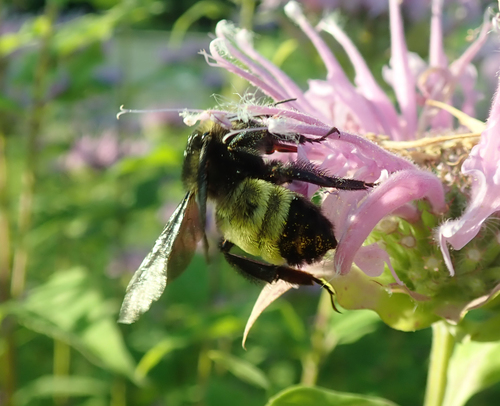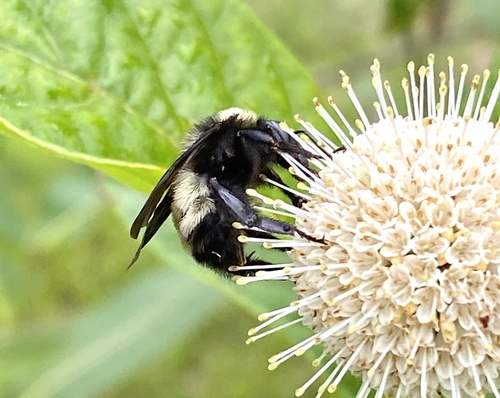Bombus sonorus/Bombus pensylvanicus: evidence of hybridization?
Bombus pensylvanicus was described as a species in 1773 (by De Geer). One hundred years later, in 1873, B. sonorus was described as a species (by Say). Franklin (1912) recognized them as species, but Milliron (1973) and Williams (2014) recognized B. sonorus as a subspecies of B. pensylvanicus. There have been reports of "intermediates" between Bombus pensylvanicus and B. sonorus in Texas and Mexico. However, these reports don't describe very well, if at all, the phenotype of the intermediates that they're reporting. Yet these alleged intermediates have influenced some taxonomists to demote B. sonorus to a subspecies under B. pensylvanicus. Unpublished, preliminary genetic data also contributed to this demotion. None of this evidence is documented very well in the published literature. Because of the longstanding and remaining uncertainty, I'm on a quest to set the record straight--with well documented evidence.
My objective is to find genetic/phenotypic evidence to support or refute the hypothesis of hybridization. I am collecting specimens of both species at locations where both species can be found pollinating the same plant. Then, I'll extract DNA and sequence a mitochondrial gene (I've already confirmed that the two species are genetically unique). If I find the DNA sequence of B. sonorus in a specimen that is phenotypically B. pensylvanicus (and vice versa), that would be evidence of hybridization at some point in the past.
What might constitute a "hybrid phenotype"? Labougle (1990) states: “...it is sometimes difficult to place a Mexican specimen in either subspecies because there are specimens with the coloration of the scutellum...intermediate between the two taxa.” The scutellum is the region of the pronotum between the base of the wings. But what does intermediate coloration mean, exactly? The author does not explain. Among males, intermixed black and yellow hairs is common in B. pensylvanicus so this cannot constitute such evidence. However, among females, B. pensylvanicusis described as having a scutellum usually covered in only black hairs, while in B. sonorus, only yellow hairs. If intermixed hairs is the "hybrid trait" reported in Texas and Mexico, we can discount this as evidence of hybridization if we find this trait in specimens far outside the zone of overlap (sympatry) between the two species--in places where it would be impossible for hybridization to occur. And there are indeed examples of this:
Female B. pensylvanicus with mixed yellow/black hairs on scutellum





